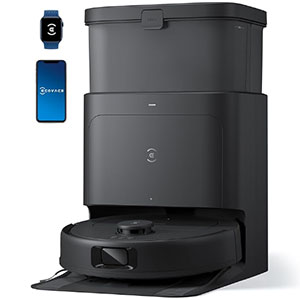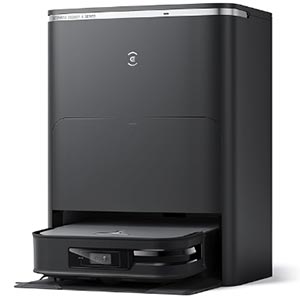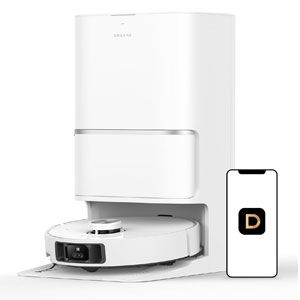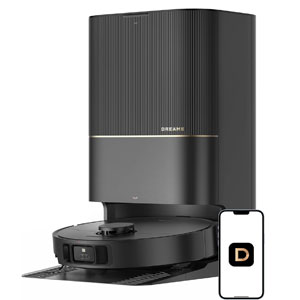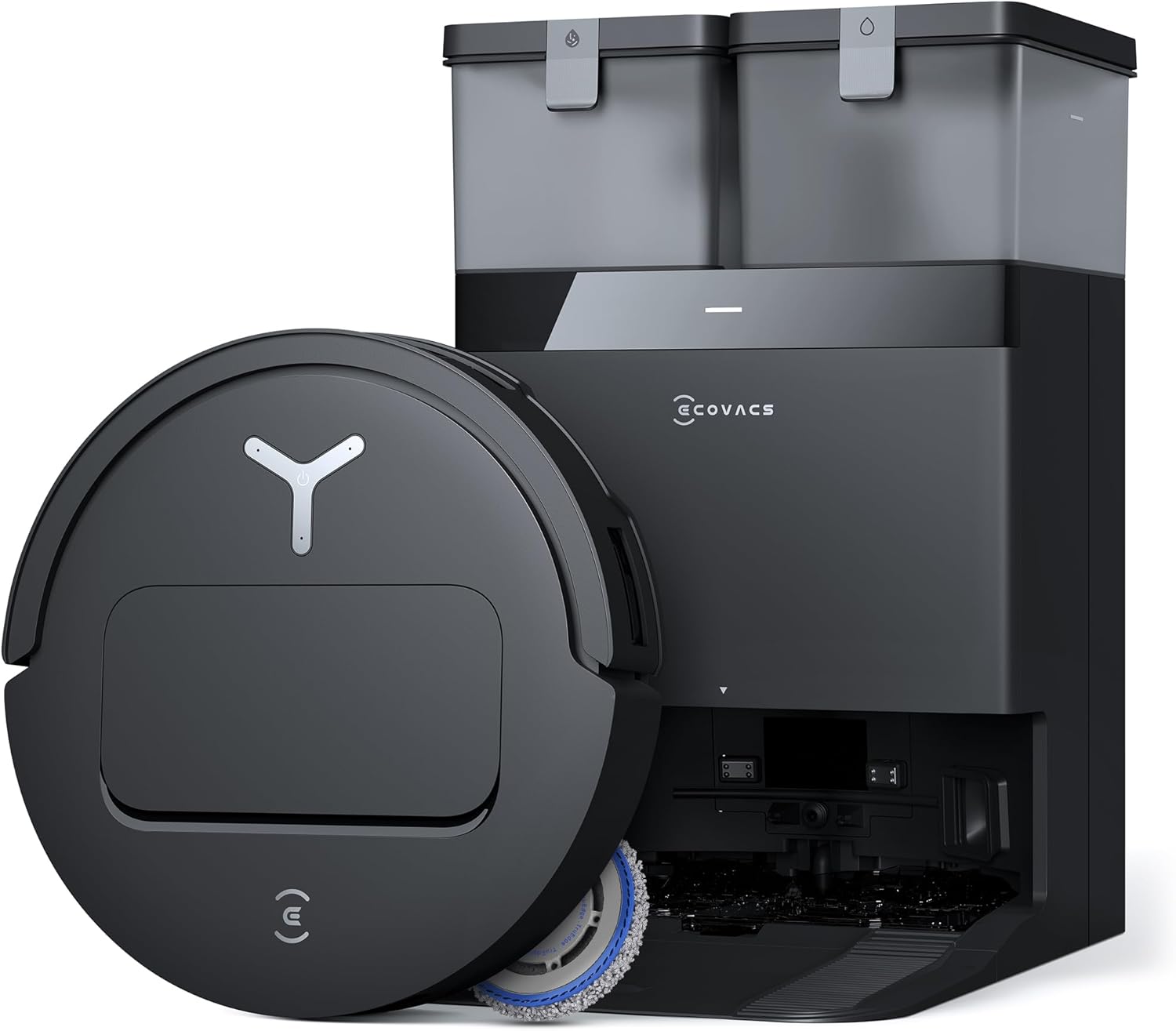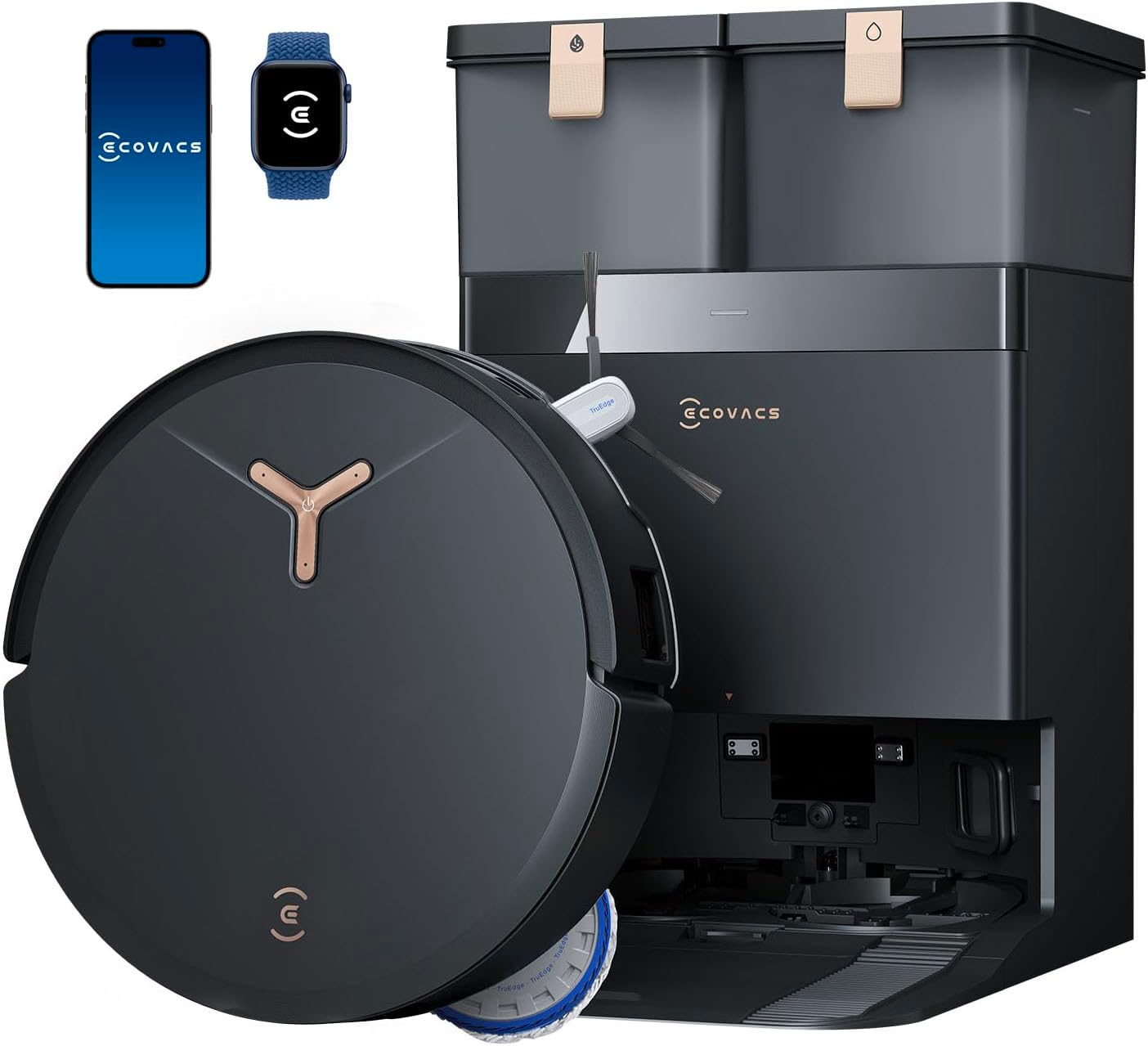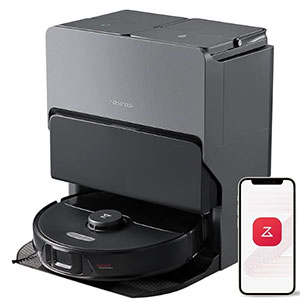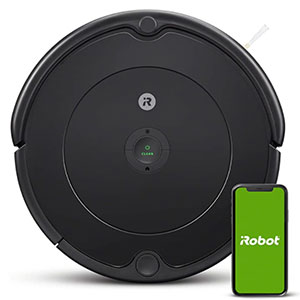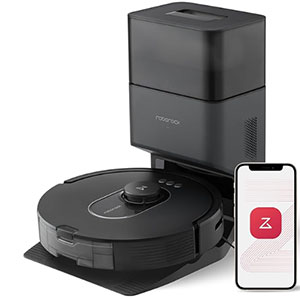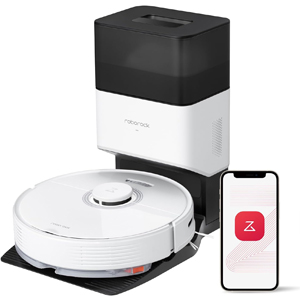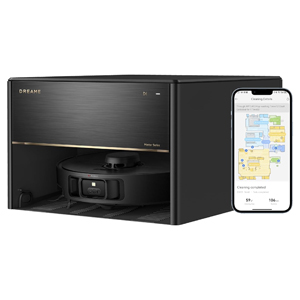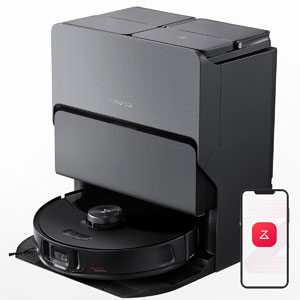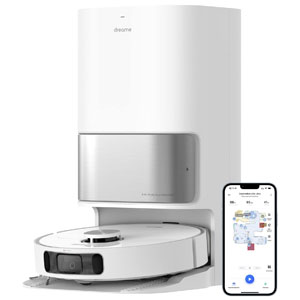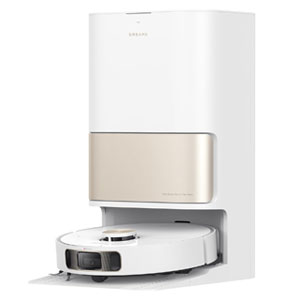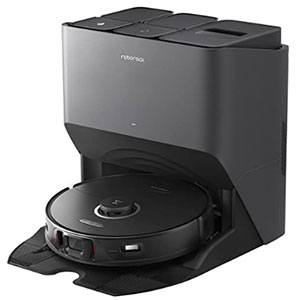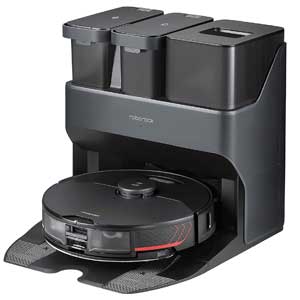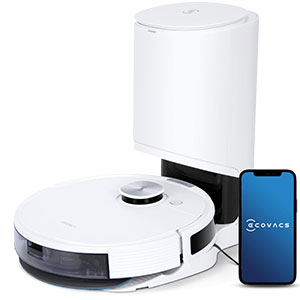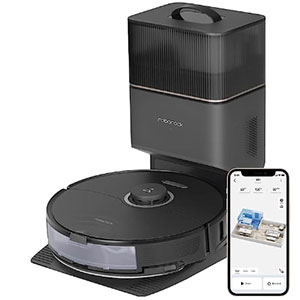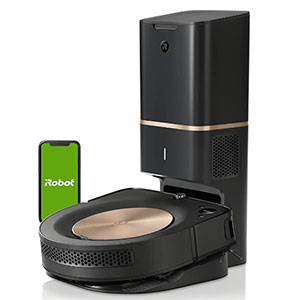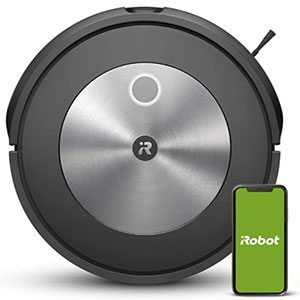Why is DREAME X50 Ultra better that Roborock Saros Z70?
Main Features parametrs
-
1
Cleaning Area2152sq. ft. (43 points)
vs 2152sq. ft. (43 points)
-
2
Dustbin Capacity180ml (23 points)
vs 395ml (51 points)
-
3
Estimated empty time75days (50 points)
vs 100days (67 points)
-
4
Noise Level63dB (85 points)
vs 63dB (85 points)
-
5
Suction Power22000Pa (100 points)
vs 20000Pa (91 points)
price comparison
Create Amazon Price Alert
Stay ahead of the deals with our Price Alert feature! Simply enter your email, and we’ll monitor the price of your chosen product. As soon as a discount is available, you’ll receive an instant notification so you never miss out on savings.
Average Price per Month
The chart displays prices for each month.
Data for the chart is sourced from public sources.
Which are the most popular comparisons?
User reviews
No reviews yet
Be the first. Use your experience to help others in the community make a decision.
No reviews yet
Be the first. Use your experience to help others in the community make a decision.
Main Features
Suction Power
Cleaning Area
Noise Level
Dustbin Capacity
Estimated empty time
Dustbin Capacity (Dock)
Water Tank Capacity
Clean Water Tank (Dock)
Anti-Allergen System
Auto Dirt Disposal
Multi-floor Mapping
Edge Cleaning
Real-Time Mapping
Scheduled Cleaning
Self-Emptying Base
Surface Recommendation
Voice Control
Wet/Dry Cleaning
Type of charging station
Brand
Dirt Water Tank (Dock)
Cleaning System
Anti-Tangle Technology
Mopping Functionality
Carpet Boost
Brushroll
Auto Hot Water Mop Washing
Auto Refilling
Auto-lifting Mop
Downward Pressure
Main Brush
Number of mopping pads
Rotating Mop
Self Washing and Drying
Navigation systems
Navigation System
Cliff/Drop Sensors
Dirt Detection Sensors
Multi-Room Cleaning
Floor Type Detection
Obstacle Detection Sensors
Room Mapping Capability
Obstacle Avoidance
Connectivity & Control
Cleaning History
Compatible with Alexa
Compatible with Google Assistant
Real-Time Monitoring
Mobile App
Type Wi-Fi
Zone Cleaning via App
Wi-Fi
Auto-Return to Base
No-Go Zones
Smart Watch Control
Video Monitoring
Battery
Max Runtime
Charging Time
Battery Capacity
Auto Recharge & Resume
Energy Efficiency Mode
Removable Battery
Dustbin & Filters
Dust Compression
HEPA Filter
Full Bin Indicator
Odor Control
Design
Length
Height
Width
Compactness
Weight
Color Options
Display Screen
Robot Dimension (L x W x H)
Station Dimension (L x W x H)
Key Differences Between Roborock Saros Z70 and Dreame X50 Ultra
- Robotic Arm: The Roborock Saros Z70 features a unique 5-axis OmniGrip mechanical arm, capable of picking up small objects (up to 300 grams) like socks or pet toys and storing them in a designated compartment. This is a groundbreaking feature not found in the Dreame X50 Ultra, which lacks any robotic arm functionality.
- Suction Power: The Saros Z70 offers a superior 22,000Pa suction power, excelling at cleaning fine debris on both hard floors and carpets. The Dreame X50 Ultra, with 20,000Pa, is slightly less powerful but still performs strongly, particularly on carpets.
- Obstacle Avoidance: The Dreame X50 Ultra has a slight edge in obstacle avoidance, performing better in tests by avoiding common hazards like cords and furniture legs more consistently. The Saros Z70’s StarSight System 2.0, while advanced, occasionally struggles with table legs.
- Height and Clearance: The Dreame X50 Ultra has a retractable LiDAR system, allowing it to achieve a lower profile (89.5 mm) to navigate under furniture. The Saros Z70 is slightly slimmer at 79.8 mm, making it the thinnest model tested, ideal for low-clearance areas.
- Threshold Crossing: The Dreame X50 Ultra can cross thresholds up to 2.36 inches (42 mm), significantly higher than the Saros Z70’s 1.18 inches (30 mm), making it better for homes with varied floor heights.
- Mopping System: The Saros Z70 uses a VibraRise 4.0 mopping system with a mini edger mop head, excelling in edge cleaning. The Dreame X50 Ultra employs a dual-spinning mop pad with an extendable mop for better edge coverage, though it may require more maintenance.
- Price: The Saros Z70 is priced at $1,999, significantly higher than the Dreame X50 Ultra at around $1,699, reflecting its robotic arm and premium features.
Key Similarities Between Models
- Navigation Technology: Both models use advanced LiDAR-based navigation systems with retractable sensors for precise mapping and obstacle avoidance, capable of creating detailed 3D home maps.
- Multi-Function Docks: Both include all-in-one docking stations that self-empty dustbins, wash and dry mop pads, and refill water tanks, reducing maintenance.
- Battery Life: Both feature a 6,400 mAh battery, offering up to 180–300 minutes of runtime, suitable for large homes.
- Smart Features: Both support AI-powered apps with real-time cleaning reports, customizable multi-floor mapping, and compatibility with Alexa and Google Assistant for voice control.
- Anti-Tangle Brushes: Both employ anti-tangle brush designs—Dreame’s DuoBrush with dual tapered rollers and Roborock’s DuoDivide with a split roller—effectively handling pet and human hair.
- Noise Levels: Both operate quietly, with the Saros Z70 at 50 dB in eco mode and the X50 Ultra noted for low noise, making them suitable for daytime use.
Conclusion
The Roborock Saros Z70 stands out as the more innovative model due to its groundbreaking OmniGrip robotic arm, higher suction power (22,000Pa), and ultra-slim 79.8 mm profile, making it ideal for homes with low furniture and small clutter.
Its superior hard-floor cleaning and edge mopping performance further enhance its appeal for tech enthusiasts willing to pay a premium ($1,999). However, its higher price and occasional navigation issues with table legs are drawbacks. The Dreame X50 Ultra, priced lower at $1,699, offers better obstacle avoidance and excels at crossing higher thresholds (2.36 inches), making it more versatile for homes with varied floor heights.
Its mopping system is effective, though slightly less precise on edges compared to the Z70. For most users, the Dreame X50 Ultra provides a better balance of performance and value, especially for carpet-heavy homes or those with complex layouts. The Saros Z70 is the better choice for those prioritizing cutting-edge features and hard-floor cleaning, despite its cost and minor navigation flaws.
Which are the best Robot vacuum cleaners?
Thank you for your feedback. Your feedback is very important to us
Thank you for subscribing!
You have successfully subscribed to price drop notifications for your selected product.
To activate your subscription, please check your email and confirm it by clicking the link we’ve sent you.
Once confirmed, we’ll notify you as soon as the price changes. If you have any questions, feel free to reach out to our team!


![61sntLkvmBL._AC_SL1500_[1]](https://robotbox.net/wp-content/uploads/2025/07/61sntLkvmBL._AC_SL1500_1.jpg)
![61fnYyo6JgL._AC_SL1500_[1]](https://robotbox.net/wp-content/uploads/2025/07/61fnYyo6JgL._AC_SL1500_1.jpg)
